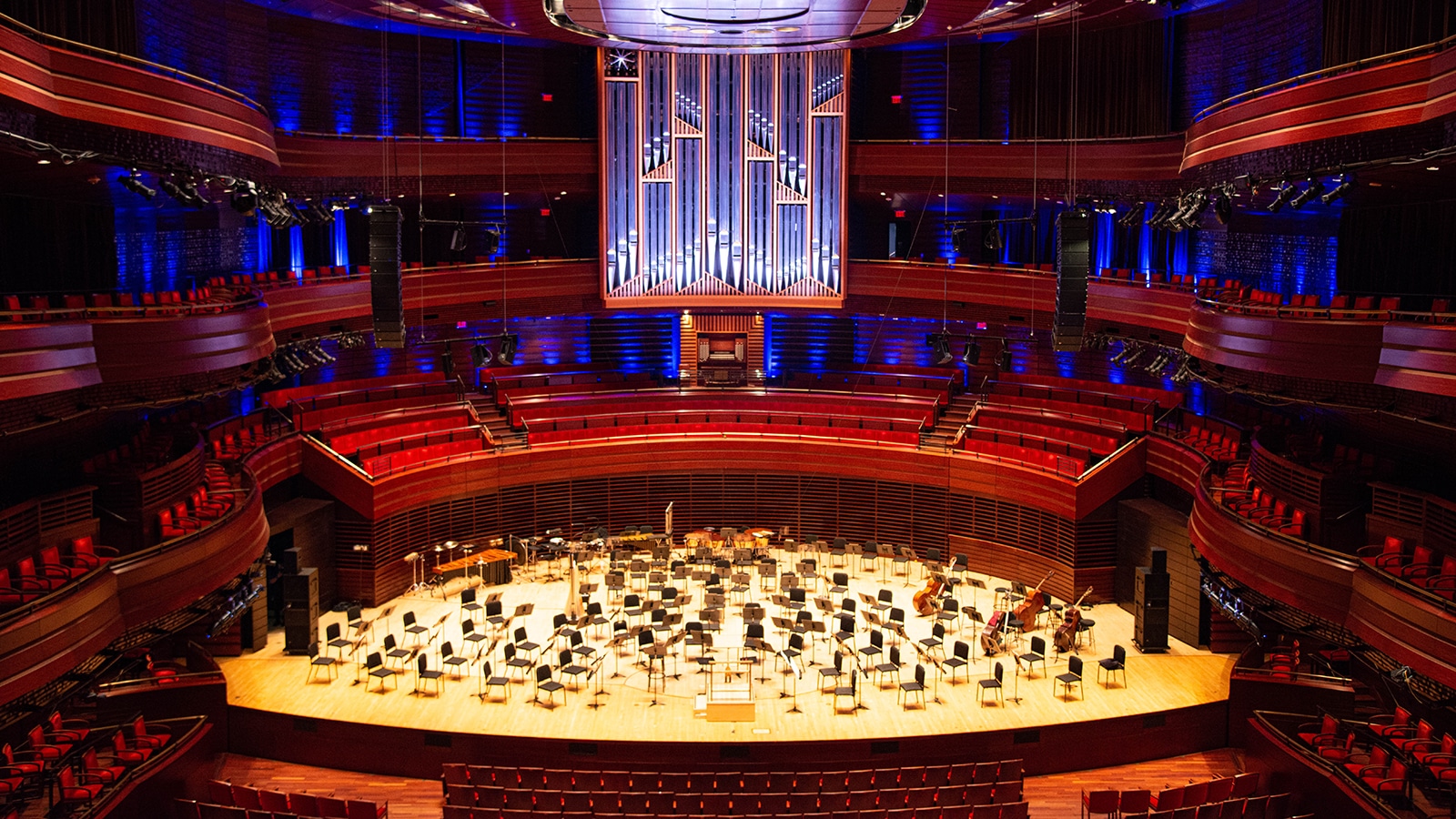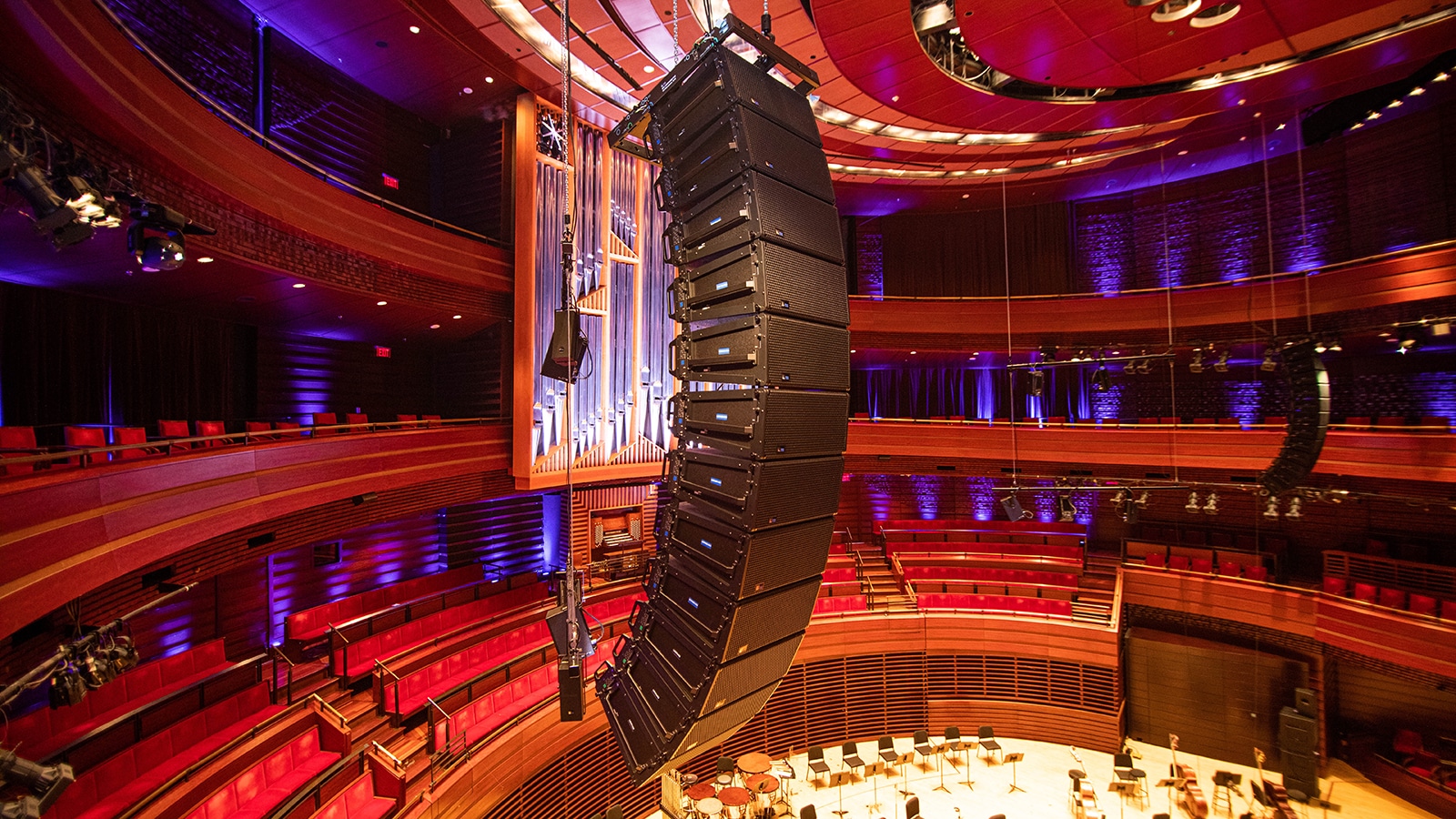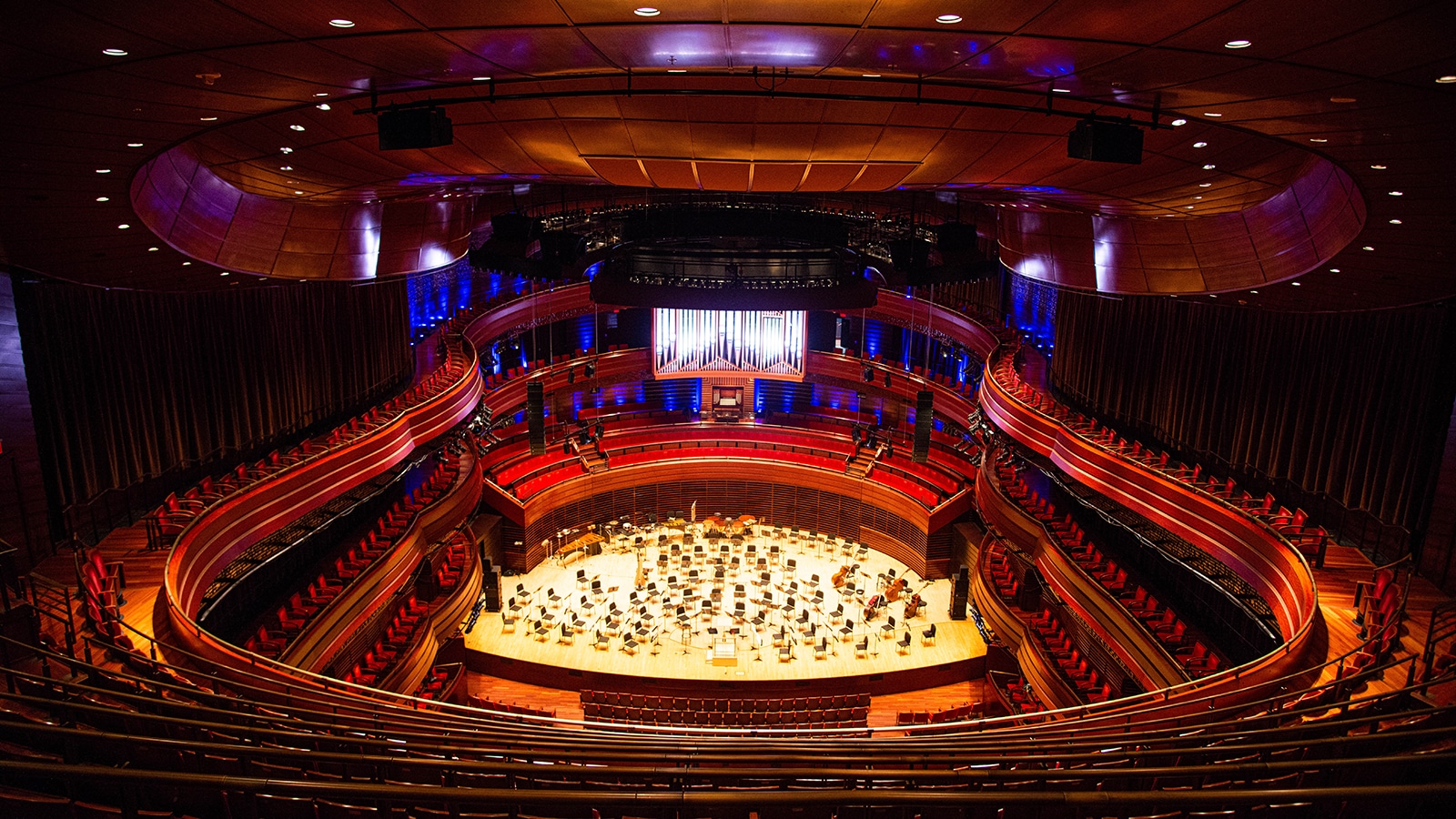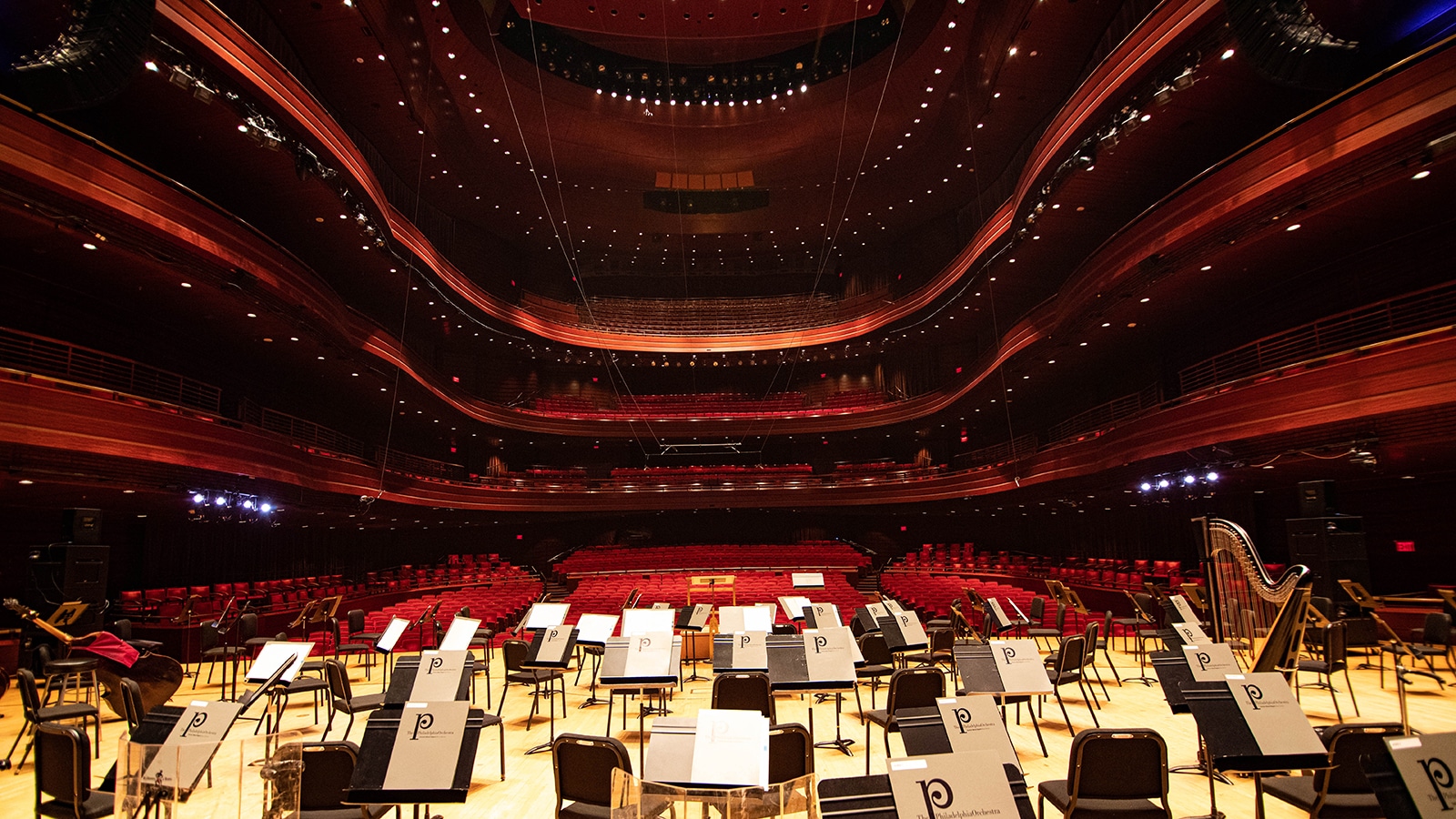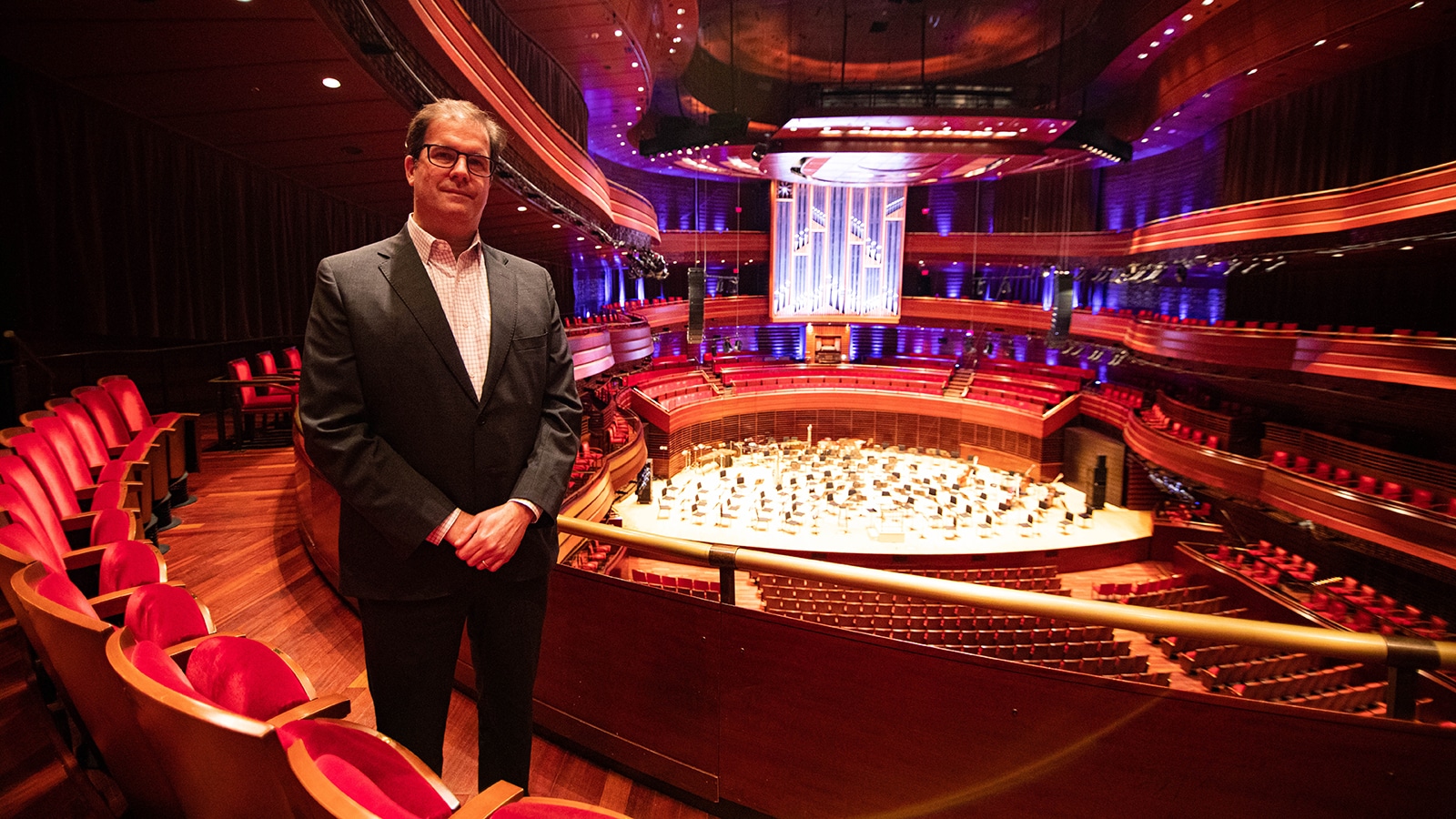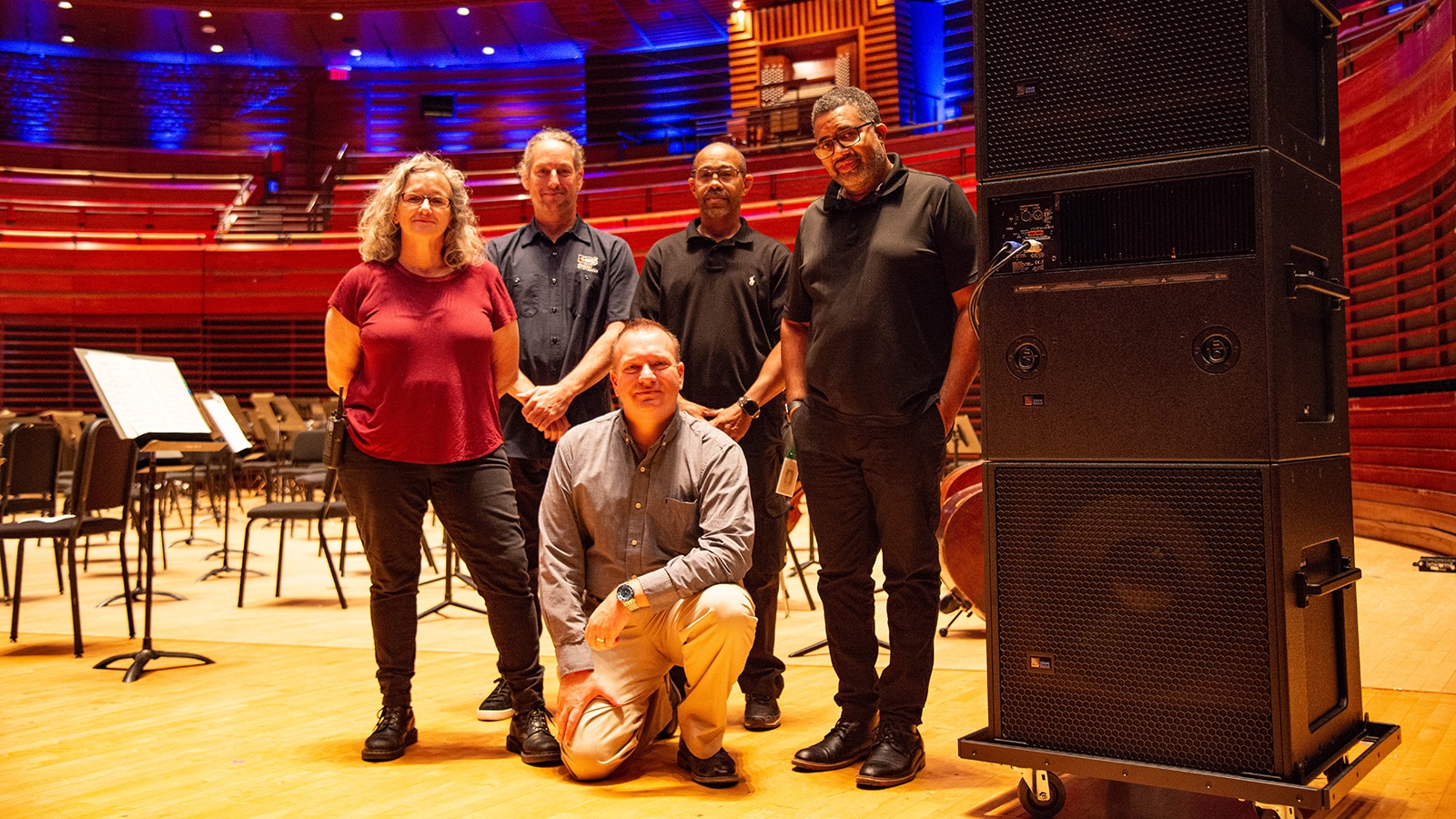A world class venue needs a world class sound system and simply put, Meyer Sound is the best. ... We have put the system through its paces on numerous occasions and are thrilled with how it is performing.”
Matías TarnopolskyPresident and CEO, The Philadelphia Orchestra and Kimmel Center, Inc.
Two decades after it first opened to the public with its original Meyer Sound system, Philadelphia’s premiere concert venue, Verizon Hall at the Kimmel Center for the Performing Arts, celebrated its reopening with a completely new system incorporating Meyer Sound’s latest technology, including LEOPARD line array and ULTRA-X Series point source loudspeakers.
With 360-degree seating for 2,500 patrons, Verizon Hall, home of The Philadelphia Orchestra, is one of the largest venues on the Kimmel Cultural Campus in downtown Philadelphia. Opened in 2001, the hall features performances from the world-renowned Philadelphia Orchestra, the Philly Pops, and artists in the Kimmel Campus Presents series. After an extended pandemic hiatus, Verizon Hall reopened to the public in September and debuted its new Meyer Sound system with an amplified Philly Pops concert series showcasing the music of Frank Sinatra.
“The new system has been extremely well received,” says Director of Production Andre Barette. “The comments have been overwhelmingly positive. The loudspeakers put out a lot of sound for their size, and we love how controlled and directional they are. With our excellent concert hall acoustics, it’s critical that the amplified sound be crisp and clear in every seat, with the same response from the front row to the upper balcony.”
Although The Philadelphia Orchestra itself is not amplified through the system, the new loudspeakers are utilized for dialog and effects in a film series where the Orchestra performs the score. Concerts for the Philly Pops and Kimmel Campus Presents series normally are amplified.
The original Meyer Sound system, based on a center cluster of MSL-4 loudspeakers, had been a stalwart performer, but Barette emphasizes that the time had come to upgrade to the latest audio technology as well as accommodate a video upgrade.
“We have a video screen, and the old cluster would have been a visual impairment,” says Barette. “That’s one reason our new design is split left and right, but the LEOPARD arrays also give us much more power for the movie soundtracks and any louder special events.”
Although the prior experience with Meyer Sound was a plus, all parties involved performed due diligence to assure a wise investment. Barette and Head of Audio Kenny Nash joined representatives from the resident orchestras to evaluate the core LEOPARD line array system as well as comparable arrays from two other manufacturers in separate demonstration sessions.
“Certainly, the success of the prior system played into our decision, particularly regarding longevity and customer service,” notes Barette. “But for multiple reasons we felt that the LEOPARD-based solution was the best fit for our hall. It demonstrated the versatility we need to meet all the musical styles presented here. We also appreciated the slim, sleek look of the arrays, which works well with the aesthetics of the hall.”
Most of the hall seating is covered by the twin arrays of 12 LEOPARD line array loudspeakers, with nine LEOPARD‑M80 versions for the longer throw over three standard versions for nearer seats. The wrap-around seating is accommodated by mirror image flown subsystems on each side, each with single ULTRA‑X40 and ULTRA‑X23 loudspeakers on the upper bar with two ULTRA-X40 loudspeakers and a single ULTRA‑X20 on the lower bar. Extending the high frequency coverage to the top few rows of the third tier was supported by two ULTRA-X40. Deep bass reproduction is supplied by six ground-stacked 900‑LFC low-frequency control elements, three per side in cardioid configuration.
System design was a repeat performance by Meyer Sound Director of System Optimization Bob McCarthy. DBS Audio Systems of nearby Coatesville was the integrator, under the direction of Dave Brotman, with custom rigging for the side hangs engineered and fabricated by Mountain Productions of Wilkes-Barre, Pennsylvania. Project and acoustical consultant was Chicago-based Threshold Acoustics.
Also taking a leading role in evaluation and selection of a new system was Matías Tarnopolsky, President and CEO of The Philadelphia Orchestra and Kimmel Center, Inc.
“A world class venue needs a world class sound system,” states Tarnopolsky, “and simply put, Meyer Sound is the best. We were looking for a system that creates a natural sound to ensure artists and audiences always have the best experience. We have put the system through its paces on numerous occasions and are thrilled with how it is performing.”
Tarnopolsky’s title reflects the formation of a new parent company formed between The Philadelphia Orchestra and the Kimmel Center. In addition to the Kimmel Center for the Performing Arts (Verizon Hall, Perelman Theater, SEI Innovation Studio, and the Merck Arts Education Center), the campus also includes — at separate locations — the Academy of Music and the Merriam Theater.

